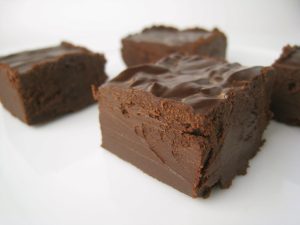Veganism, a lifestyle and dietary choice that abstains from the use of animal products and by-products, has witnessed a remarkable upswing in recent years. This surge is fueled by a myriad of factors including environmental concerns, animal welfare, and the perceived health benefits of a plant-based diet. As the populace becomes increasingly health-conscious and environmentally aware, the shift towards plant-based diets is not merely a fleeting trend but a significant societal transition.
In the heart of this plant-based revolution lies chocolate, a beloved ingredient known for its versatility and rich, indulgent character. The story of chocolate begins with the cacao tree, Theobroma cacao, whose seeds, once fermented, roasted, and ground, become the foundation of all chocolate products. Given its plant-based origins, chocolate naturally finds its way into vegan cuisine. However, not all chocolate is created equal in the realm of veganism, which brings us to the nuanced world of vegan chocolate.
Chocolate in vegan cuisine is celebrated not only for its rich flavor but also for its adaptability. It can effortlessly be molded into various forms such as bars, chips, or powder, each finding its unique place in a myriad of vegan recipes. From luscious desserts like chocolate mousse and brownies to savory delights like chocolate-infused chili and mole sauce, chocolate’s utility in vegan cuisine is boundless, making it a cherished staple in plant-based culinary adventures.
Understanding Vegan Chocolate



Vegan chocolate is defined by its absence of animal-derived ingredients. Unlike conventional chocolate, which often contains milk solids or other dairy components, vegan chocolate relies on plant-based alternatives. The primary ingredients in vegan chocolate include cocoa solids, cocoa butter, and plant-based sweeteners, which maintain the integrity of chocolate’s texture and flavor while adhering to vegan dietary standards.
The divergence between conventional and vegan chocolate primarily lies in their ingredient composition. Conventional chocolate often contains milk solids, whey, butterfat, or other dairy derivatives which contribute to its creamy texture and rich taste. On the other hand, vegan chocolate substitutes these animal-based ingredients with plant-derived alternatives like almond milk, coconut oil, or soy lecithin, to name a few. The result is a product that upholds the essence of chocolate while aligning with the principles of veganism.
One of the crucial steps in navigating the world of vegan chocolate is the meticulous examination of ingredient labels. Despite the seemingly straightforward nature of chocolate, many chocolate products contain non-vegan additives that can easily be overlooked. Common culprits include milk solids, whey, and certain types of lecithin. Being vigilant in checking ingredient labels is a small yet significant step towards ensuring that the chocolate product in hand is truly vegan, paving the way for a guilt-free indulgence in the rich, dark allure of vegan chocolate.
The Versatility of Chocolate in Vegan Cuisine
- Chocolate’s innate versatility makes it a prized ingredient in vegan cuisine, embodying a spectrum of culinary expressions that span from sweet to savory.
- Its adaptability is showcased in its many forms, each with its unique characteristics and uses.
- Vegan chocolate bars, often used as a standalone treat, can also be melted down to become a decadent base for a variety of dishes.
- Chocolate chips are a beloved addition to cookies, muffins, and a myriad of baked goods, adding a sweet, chocolaty dimension to every bite.
- Cocoa powder, with its concentrated chocolate flavor, serves as a key ingredient in both sweet and savory recipes, bringing richness and depth to the dish.
- The array of vegan chocolate-infused dishes is as boundless as the culinary imagination.
- Sweet endeavors might lead to the creation of velvety chocolate smoothies, moist chocolate cakes, or creamy chocolate puddings, each dish narrating its own tale of vegan indulgence.
- On the savory front, chocolate’s complex flavor profile lends itself to innovative concoctions like mole sauce, a traditional Mexican sauce that marries chocolate with spices and chilies, creating a taste that is both unique and unforgettable.
- Through these varied applications, chocolate transcends the ordinary, marking a delightful and creative journey in vegan cuisine.
Health Benefits of Chocolate in a Vegan Diet



Dark chocolate, the purest form of chocolate, is often celebrated for its health benefits, particularly in a vegan diet where nutrient-dense foods are highly valued. Rich in antioxidants, dark chocolate helps combat oxidative stress, promoting overall cellular health. The presence of essential minerals like iron and magnesium further accentuates its nutritional profile, aiding in oxygen transport and muscle function respectively.
The health benefits derived from chocolate are significantly amplified when opting for high-quality, high-cocoa content chocolate. The higher the cocoa content, the lower the sugar, and the richer the antioxidant and mineral content. Selecting premium quality chocolate with a high percentage of cocoa not only ensures a purer chocolate experience but also maximizes the potential health benefits, aligning with the health-conscious ethos prevalent in the vegan community.
Ethical Considerations: Fair Trade and Beyond
Veganism often extends beyond dietary choices, encapsulating a broader ethos of ethical consumption and environmental responsibility. This ethos seamlessly intersects with the principles of Fair Trade, a movement that advocates for fair wages, ethical treatment of workers, and sustainable farming practices in the chocolate industry. By choosing Fair Trade certified chocolate, individuals can align their purchasing decisions with their values, creating a positive impact that reverberates through the supply chain.
Certifications like Fair Trade serve as a beacon for individuals navigating the complex landscape of ethical chocolate purchasing. They provide a tangible assurance that the chocolate in hand adheres to stringent ethical and environmental standards, resonating with the core principles of many within the vegan community. This alignment of values fosters a deeper appreciation and enjoyment of chocolate, enriching the experience of chocolate in vegan cuisine on a multidimensional level.
Sourcing and Purchasing Vegan Chocolate
Finding vegan chocolate has become a less daunting task as the demand for plant-based products surges. Specialty stores often harbor a variety of vegan chocolates, providing a platform for small, artisanal brands to showcase their creations. Online retailers further broaden the horizon, offering a plethora of vegan chocolate options that can be delivered to one’s doorstep. Even mainstream supermarkets have begun to acknowledge the vegan wave, dedicating sections to plant-based products including vegan chocolate.
When it comes to reputable brands, several have emerged as frontrunners in producing high-quality vegan chocolate. Brands like Endorfin Foods, Hu Chocolate, and Taza Chocolate have garnered attention for their commitment to crafting exquisite vegan chocolate that doesn’t compromise on taste or ethical standards. Through their efforts, they not only satisfy the sweet cravings of the vegan community but also set a high bar for quality in the vegan chocolate market.
Creating Vegan Chocolate at Home
The art of making vegan chocolate from scratch unveils a realm of creativity and personalization. With a few fundamental ingredients—cacao butter, cacao powder, and plant-based sweeteners like maple syrup or agave nectar—one can embark on a delightful chocolate-making journey. The process, although delicate, is straightforward: melting cacao butter, blending in cacao powder and sweetener, and allowing the mixture to set in molds until solidified.
Homemade chocolate encapsulates several joys and benefits. It allows for control over the ingredients, ensuring a pure, vegan concoction devoid of unwanted additives. Moreover, it opens the door to creative expression—experimenting with flavors, fillings, and shapes to craft a chocolate that is uniquely personal. The hands-on experience of creating chocolate from scratch also fosters a deeper connection to the ingredient, enriching the appreciation for the craft of chocolate-making.
Conclusion
The exploration of chocolate in vegan cuisine unveils a narrative of endless culinary possibilities. Chocolate’s journey from a humble cacao bean to a versatile, cherished ingredient in the vegan kitchen is a testament to its enduring allure and adaptability. Its ability to transcend the boundaries of sweet and savory, to mingle with a myriad of flavors, and to adapt to ethical and dietary considerations makes it an integral part of vegan culinary arts.
As the world of vegan cuisine continues to evolve, the fusion of chocolate in this realm is a delightful endeavor worthy of exploration. Whether sourced from ethical brands, purchased from accessible retailers, or crafted in the home kitchen, vegan chocolate stands as a symbol of culinary creativity and ethical indulgence. The invitation is open to delve deeper, to experiment, and to discover the joy that the fusion of chocolate and vegan cuisine can bring to the palate and to the world.

